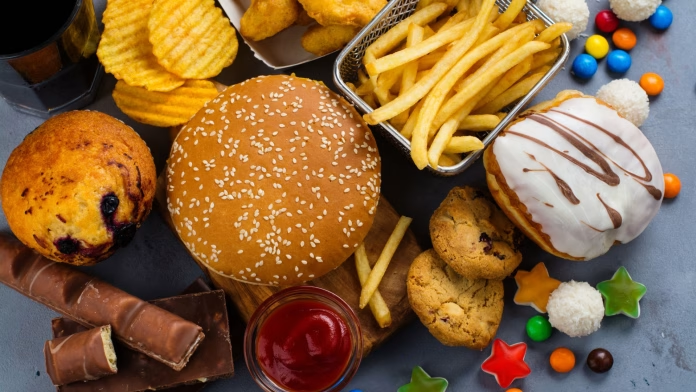In a world where we are constantly bombarded with advice on what to eat and what to avoid, it’s refreshing to discover that some of the foods we consider “bad” may actually have surprising health benefits. Yes, you read that right. We’ve delved into the realm of so-called unhealthy foods and uncovered their hidden healthy aspects. While we’re not suggesting you go on an all-out binge, incorporating these foods into a balanced diet can bring about positive changes. So, let’s dive into the top five ‘bad’ foods that are actually good for you.
- Peanut Butter: The creamy indulgence that dieters often avoid due to its high-fat content can actually be a healthy addition to your diet. Believe it or not, a teaspoon of whole-nut peanut butter contains just 30 calories (depending on the brand). But why is it good for you? Research suggests that peanuts can improve heart health by lowering total cholesterol, reducing LDL or ‘bad’ cholesterol, and lowering triglyceride levels, all of which contribute to a decreased risk of cardiovascular disease. Enjoy a teaspoon of peanut butter on a couple of oat cakes for a satisfying snack under 150 calories.
- Pizza: Hold on, before you grab a slice of that greasy, stuffed-crust pizza, hear us out. While traditional pizza may not be the healthiest option, a homemade, healthy version can provide a complete meal with essential food groups. Opt for a whole-grain base, spread a rich tomato sauce, load up on vegetables, lean meat or seafood, and sprinkle on a little low-fat mozzarella. This way, you get your carbohydrates, protein, healthy fats, and a dose of veggies all in one delicious package.
- Beer & Stout: Surprisingly, research suggests that a pint of beer could have cardiovascular benefits, potentially even more than a glass of red wine. The presence of B6 in beer prevents the build-up of homocysteine, a chemical associated with an increased risk of heart disease. And when it comes to stout, the famous slogan “Guinness is good for you” might hold some truth. A study from the University of Wisconsin revealed that a pint of stout is as effective as an aspirin in preventing blood clots. Cheers to that!
- Chocolate: Before you dismiss chocolate as a guilty pleasure, consider this: dark bitter chocolate is rich in health-promoting antioxidants that help combat harmful free radicals, which can cause damage to cells and DNA. Additionally, if you’re looking to satisfy your sweet tooth while watching your weight, a few small squares of dark chocolate can help curb cravings without causing a significant calorie and fat overload.
- Ice Cream: Believe it or not, ice cream can have some redeeming qualities. Contrary to popular belief, it is a low glycemic index (GI) food, meaning it releases its sugars slowly, keeping you feeling fuller for longer. This can help prevent overeating and binging. Of course, moderation is key, and devouring a whole tub in one sitting won’t do you any favors. When comparing desserts, a serving of Ben and Jerry’s Cookies and Cream ice cream (75 grams or 2.64 ounces) contains only 114 calories compared to a slice of cheesecake with a whopping 511 calories. Furthermore, ice cream is made from milk, which is a good source of essential nutrients. Some studies even suggest a possible link between milk consumption and a reduced risk of arterial hypertension, coronary heart disease, and colorectal cancer.
Remember, incorporating these foods into a healthy and balanced diet is the key. Indulge sensibly, savor the flavors, and enjoy the surprising health benefits that these seemingly ‘bad’ foods can bring. As with any dietary choices, consult with a healthcare professional or nutritionist to ensure they align with your specific health needs.



